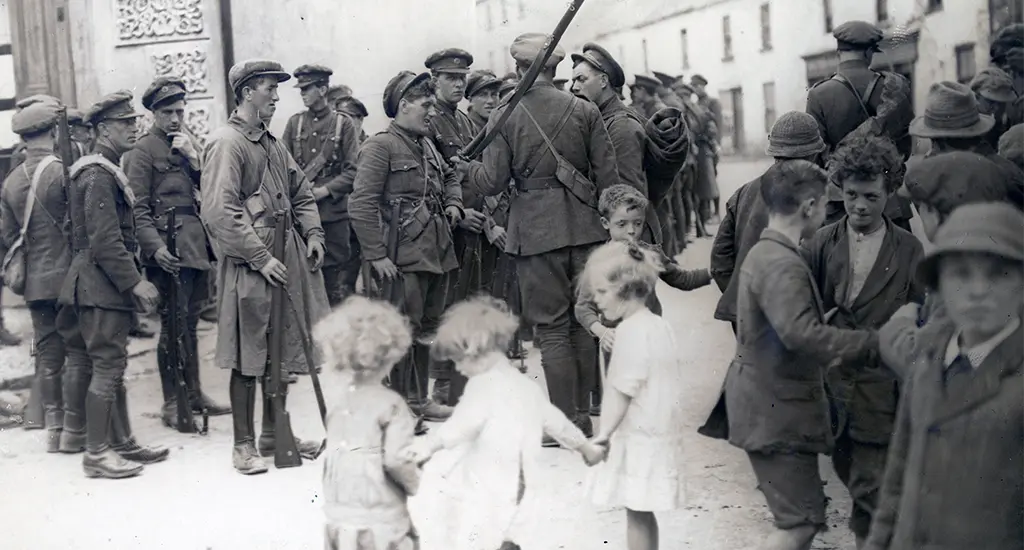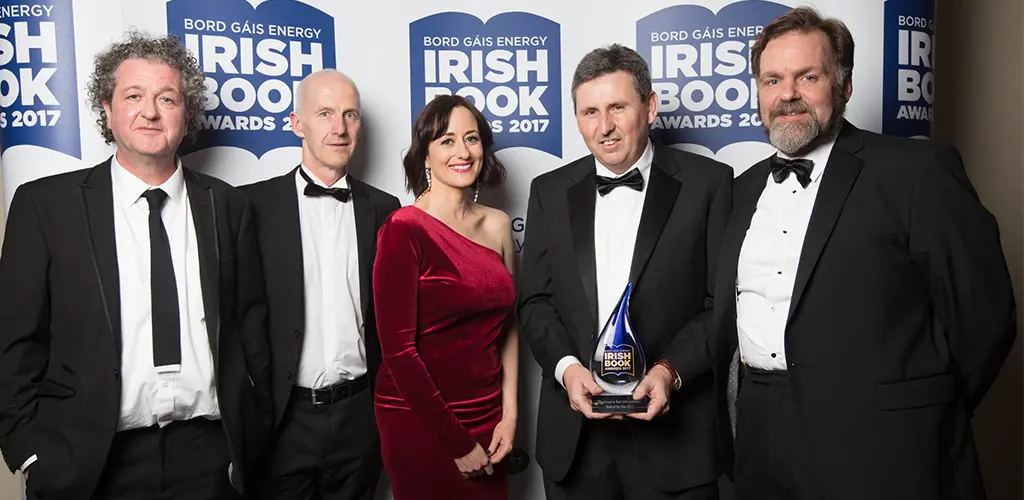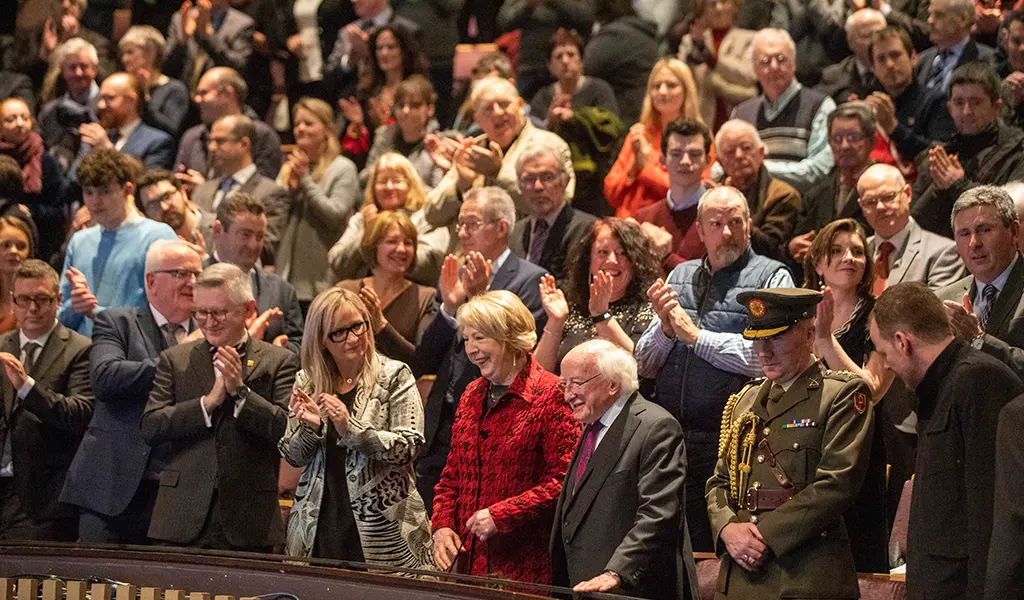Atlas of the Irish Revolution

The Challenge
The Atlas of the Irish Revolution (2017) represents a landmark contribution to the study of the revolutionary years in Ireland. Similar in style and scale to the Atlas of the Great Irish Famine (2012), it is a joint project of the School of History and the Department of Geography at University College Cork. The principal challenge involved in the project was to give cartographic expression to a range of historical sources that would bring fresh insights to bear on a multiplicity of military, political, economic, social, demographic and cultural phenomena in the pivotal years from the beginning of the Home Rule crisis in 1912 to the ending of the Civil War in 1923. Over 300 new maps were generated that provided new ways of seeing and understanding the Irish revolutionary experience. One cannot underestimate also the challenge of bringing together so many different scholars from diverse backgrounds, while also working in partnership with the major national and regional archival and cultural institutions to produce a book which is a unique blend of text, map, archival document, photograph and painting. The publication of the atlas in 2017 and the online mapping projects that are another invaluable outcome are major contributions to public scholarship. The contribution of the atlas was recognised by historian and RTÉ broadcaster John Bowman in the following terms:
Perhaps the most ambitious of the highly original Atlas series from Cork University Press. The latest scholarship – and from many diverse viewpoints – places the Irish revolution in its international context. Accessible, readable and brilliantly produced with telling use of photographs and maps, few readers will finish this book without fresh understandings of the forces which shaped modern Ireland – outstanding.
The Research
While the atlas provides ample arresting, original and previously unpublished visual material it is the maps which are the book’s critical research tool serving as portals through which readers can view specific aspects of revolutionary Ireland. The selection of topics for mapping was based on cartographic, conceptual and historical considerations and choices, including the availability of suitable data and the ability to illuminate aspects of the main chapters and case studies. The growth of historical research and the increasing digitisation of data and archives has expanded both the repertoire of subjects capable of being mapped and the quantity of accessible data in relation to specify topics and themes. Much of the extensive original data utilised in this project has been generated from recently released archives, such as the invaluable Military Service Pensions Collection (MSPC). The absence of a cartographic treatment of the Irish revolution until now cannot be attributed solely to data unavailability and technological difficulty, however. With notable exceptions, Irish historians have not been sufficiently ‘map-conscious’ and have failed to give due attention to the geographical dimensions of Irish history in general while historical geographers have been slow to engage with the pivotal years of the Irish revolution. The maps that have been generated for the publication and continue to be generated for the new online projects provide powerful new understandings of this critical period in Irish history.
The Impact
Since its launch in Dublin in September 2017 the Atlas of the Irish Revolution has been widely acclaimed nationally and internationally for the scope of its vision and its original approach to research on the revolutionary years in Ireland. Published by Cork University Press and by New York University in the United States, it spent over twenty weeks in the Irish Bestsellers listings - two weeks at number one in the Irish non-fiction category [Data Supplied by Nielsen Book Scan taken from the Irish Consumer Market https://www.writing.ie/] The book has sold over 32,000 copies and continues to sell based on the success of the RTÉ three-part documentary series based on the book, The Irish Revolution (broadcast in 2019). The Atlas was the overall winner of the prestigious Book of the Year at the Bórd Gáis Irish Book Awards 2017, having previously been awarded the best Irish-published Book of the Year. It was voted book of the year by the listeners to RTÉ’s Liveline as well as being awarded the Geographical Society of Ireland Book of the Year in 2018. For an academic publication the book has had an extraordinary impact and, like the Atlas of the Great Famine, it has been embraced by the President of Ireland Michael D. Higgins as signifying all that is good about public scholarship. It has also been widely reviewed in newspapers and academic journals. The editorial team have been involved in a series of radio programmes, lectures, seminars and public talks, nationally and internationally.

Fig. 1 The Atlas of the Irish Revolution was named Irish Book of the Year in 2017
A three-part documentary series based on the Atlas, directed by Ruán Megan and narrated by Cillian Murphy was broadcast on RTÉ in February 2019 with a repeat broadcast in November 2019. The three episodes are also available long-term on the RTE Player. The series attracted an audience of c. one million views over the three nights of its initial broadcast. A preview of Episode 2 was the centrepiece of a sold-out gala screening in the Cork Opera House attended by the President of Ireland, Michael D Higgins, who took part in a recorded radio discussion afterwards hosted by John Bowman, which was broadcast on 17 March 2019. The documentary was nominated for the PRIX EUROPA Best European TV Documentary of the Year in 2019. An RTÉ /UCC online project is currently being developed that complements both the book and the documentary. It will be launched in March 2020.

Fig. 2 President Michael D. Higgins being welcomed in the Cork Opera House in 2019 at a preview showing of the Cillian Murphy-narrated three-part documentary series The Irish Revolution.
An Atlas of the Irish Revolution lecture series was hosted by the National Library of Ireland in 2017 in partnership with UCC, while the National Museum of Ireland included a time series 1916 Deportation map from the atlas in their main exhibition on the 1916 Rising.
A highly successful Atlas of the Irish Revolution exhibition was hosted in St Peter’s, North Main Street during the summer months of 2019. A guided tour of the exhibition by John Borgonovo on Culture Night, 20 September 2019 was sold out.
The Atlas of the Irish Revolution Travelling Schools Exhibition managed by Dr Hélène O’Keeffe (School of History) was hosted by thirty-three schools in Cork and Kerry with an average of 300 students in each school. At the culmination of the year-long exhibition tour in May 2017, approximately 9,900 second level students engaged directly with the exhibition.
One of the objectives of the Atlas team was to use technology to engage digital learners with the ongoing innovative and collaborative research. Dr Hélène O’Keeffe was appointed Digital Officer for the Atlas of the Revolution in 2019 and is currently developing UCC’s own Atlas of the Irish Revolution website which will provide students and the wider public with a range of online resources. It will also showcase newly generated maps based on the Brigade Activity reports in the Military Service Pensions Collection (MSPC). Helene is also academic editor to the RTÉ/UCC online project.
For More Information
Contacts
Dr John Crowley, Department of Geography
Dr Donal O Drisceoil, School of History
Atlas Research Team
Dr John Crowley, Dr Donal Ó Drisceoil, Mike Murphy, Dr John Borgonovo, Dr Hélène O’Keeffe, Charlie Roche and Nick Hogan
“This book magnificently dissects the Irish revolution of 1913-23, layer by layer by layer. The words landmark and groundbreaking are much overused by publishers, but Cork University Press is much justified in employing those descriptions to trumpet this mammoth production, in all its glory…”
Diarmaid Ferriter (16/9/17), The Irish Times
“The Atlas of the Irish Revolution collects all the best scholars of the period in one definitive, weighty tome. It is a book that no revolution should be without”
Colm Tóibín (9/12/17) , The Irish Times
“It is tremendously helpful and stimulating for academics, and accessible for students and others. In a historiographical field marred, and sometimes characterized, by sectarianism and mythmaking, it is rewarding to see this work produced as a collection by over 100 scholars.”
Jeremy Black, Journal of European Studies, 2018
Banner Image: National Army soldiers and barefoot children in Bruff, Co. Limerick following the taking of the town from the anti-Treaty IRA in early August 1922 [Source: National Library of Ireland, HOG109]
